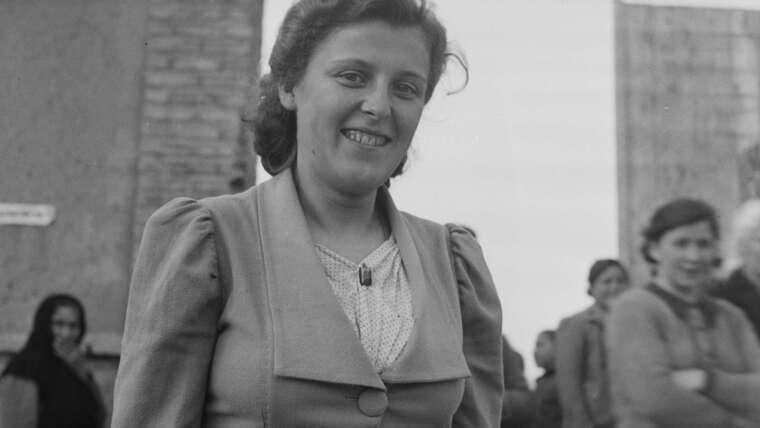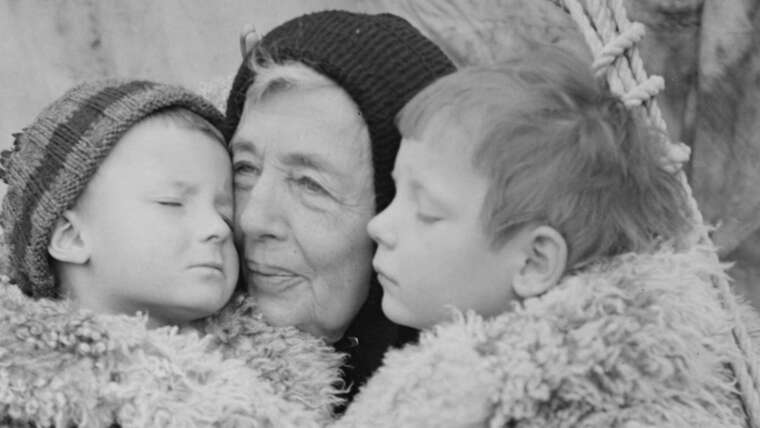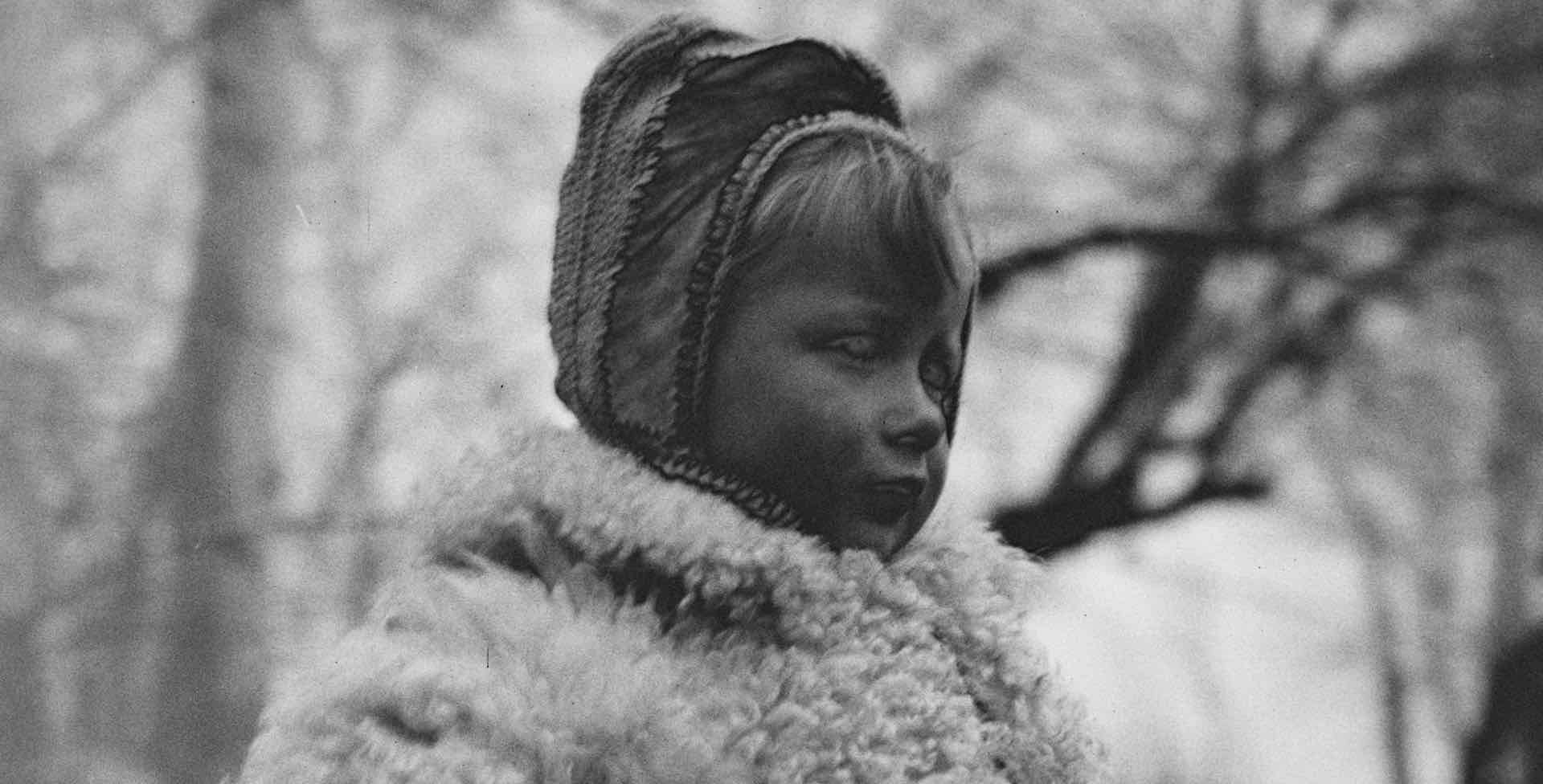By Ted Lipien for Cold War Radio Museum
Two extraordinary refugees from Poland helped to expose in 1956 to the U.S. Congress anti-U.S. propaganda activities of a communist journalist Stefan Arski, also known as Artur Salman.
By Ted Lipien for Cold War Radio Museum
Two extraordinary refugees from Poland helped to expose in 1956 to the U.S. Congress anti-U.S. propaganda activities of a communist journalist Stefan Arski, also known as Artur Salman.
The News Bureau room of the Office of War Information (OWI), November 1942, at about the same time Howard Fast started writing Voice of America newscasts. The photograph’s official caption said: “It is arranged much the same way as the city room of a daily newspaper. Here, war news of the world is disseminated. In the foreground, are editors’ desks handling such special services as trade press, women’s activities, and campaigns. The news desk is in the background.” Smith, Roger, photographer. Library of Congress Prints and Photographs Division Washington, D.C. 20540.

“I established contact at the Soviet embassy with people who spoke English and were willing to feed me important bits and pieces from their side of the wire. I had long ago, somewhat facetiously, suggested ‘Yankee Doodle’ as our musical signal, and now that silly little jingle was a power cue, a note of hope everywhere on earth…”[ref]Howard Fast, Being Red (Boston: Houghton Mifflin Company, 1990), 18-19.[/ref]
Howard Fast, 1953 Stalin Peace Prize winner, best-selling author, journalist, former Communist Party member and reporter for its newspaper The Daily Worker, decribing his role as the chief writer of Voice of America (VOA) radio news translated into multiple languages and rebroadcast for four hours daily to Europe through medium wave transmitters leased from the BBC in 1942-1943. Howard Fast, Being Red (Boston: Houghton Mifflin Company, 1990), pp. 18-19.
Throughout World War II, the arrests and forced deportations of Polish families to labor camps by Soviet Russia received practically no mainstream media coverage in the United States. After the Soviet Union became an important military ally against Nazi Germany with the sudden collapse of Stalin’s alliance with Hitler and his attack on Russia in June 1941, the propaganda agency of the Roosevelt administration–the Office of War Information (OWI)–deliberately covered up Stalin’s crimes, both the deportations of millions of people to Siberia and the mass executions of Polish prisoners of war.
A statement made on the floor of the U.S. Senate on February 8, 1940 by Senator John A. Danaher (R-Connecticut) may have been the first major public reference in the United States to the 1940 deportations of Poles and other nationalities to Gulag forced labor camps in the Soviet Union. Senator Danaher inserted in the Congressional Record the text of a resolution adopted by of the Star of Liberty Society, Group 803, of the Polish National Alliance in Stamford, Conn. It mentions in one sentence “the deportation of large numbers of Poles to Siberia.” The Polish-American organization in Connecticut adopted the resolution on January 14, 1940. By then the news of the first deportations of Poles from Soviet-occupied eastern Poland to Siberia and other parts of the Soviet Union had already reached some Polish-Americans but was not known to most Americans.
In July 1979 an American businessman and former journalist David Harold Karr who had arranged the building of the first Western hotel in Moscow was found dead under reportedly suspicious circumstances in Paris, France. Karr’s new biography, The Millionaire Was a Soviet Mole: The Twisted Life of David Karr, by Harvey Klehr, expected to be published in July 2019, will…

U.S. Government Propaganda Photo By Ted Lipien Almost no one knows today that one of the targets of misleading Soviet and American propaganda during World War II were Polish refugees fleeing from Russia. Before they were refugees, they were Stalin’s prisoners. The Red Army and the NKVD Soviet secret police occupied their cities, towns and villages in pre-war eastern Poland…

U.S. Government Propaganda Photo (OWI – 1943) By Ted Lipien U.S. government propaganda pictures taken in 1943 by the U.S. Office of War Information (OWI) photographer in Iran showed Polish children and women several months after they had come out of Soviet Russia in a mass exodus of former Gulag prisoners and their families.[ref]Farm Security Administration/Office of War Information Black-and-White…
U.S. Government Propaganda Photo (1943) By Ted Lipien Support Silenced Refugees The extent of the damage the initial propaganda from the Roosevelt administration had on the handling of the Polish World War II refugees story is not always easy to document, but some of the false information has kept reappearing in new forms for many years. After the arrival of…

U.S. Government Propaganda Photo By Ted Lipien Time Magazine Story In addition to misleading foreign audiences through Voice of America (VOA) shortwave radio broadcasts and domestic “news” outreach by the wartime Office of War Information (OWI), U.S. government propagandists had a definite impact on independent U.S. media. A short Time magazine entry on November 15, 1943 described a group of…
OPINION AND ANALYSIS Cold War Radio Museum By Ted Lipien Note: The article has been updated to include information that Heda Margolius Kovály had worked in the 1970s as a freelance reporter for the Voice of America Czechoslovak Service under a radio name Kaca Kralova. A declassified CIA report from 1953 featured a claim by a still unidentified Slovak source…
Cold War Radio Museum Updated: January 2024 A State Secret Polish children from World War II Santa Rosa refugee camp, Guanajuato, Mexico. Source: Embajada de Polonia en México, Wikipedia. The date and photographer are unknown. CC BY 3.0. How the Roosevelt Administration Shipped Polish Refugee Orphans to Mexico In Locked Trains and Lied About It to Protect Stalin The Untold…
Cold War Radio Museum Voice of America Then and Now Historically, partisanship at the Voice of America has been most often associated with Left-wing bias of some of its officials and central English newsroom reporters. By Ted Lipien After leaving the White House in 1961, former President Dwight D Eisenhower condemned a biased Voice of America (VOA) reporter who…
Cold War Radio Museum During the Cold War, it would have been unthinkable for the United States government to put in charge of U.S. international broadcasting through the Voice of America (VOA) an American businessman like Armand Hammer who had made millions for his company in various business deals with Soviet Russia. U.S. international broadcasting and business activities behind the…
Cold War Radio Museum A recent (2017) independent study by the American Foreign Policy Council (AFPC) focusing on Voice of America (VOA) broadcasts to Iran has found that under Obama administration officials these broadcasts “perpetuated to audiences the appearance of pro-regime [Iran] propaganda, rather than objective reporting, on the part of both the VOA and Farda.” Radio Farda broadcasts to…
By Ted Lipien Voice of America Polish Service Program “All About America” (Ameryka w Przekroju), July 9, 1983 Irena Radwańska Broni: Returning to the U.S. citizenship oath ceremony at Monticello, Thomas Jefferson would certainly approve of using his home for this purpose. … Thomas Jefferson wrote: “Born in other countries, yet believing you could be happy in this, our laws…